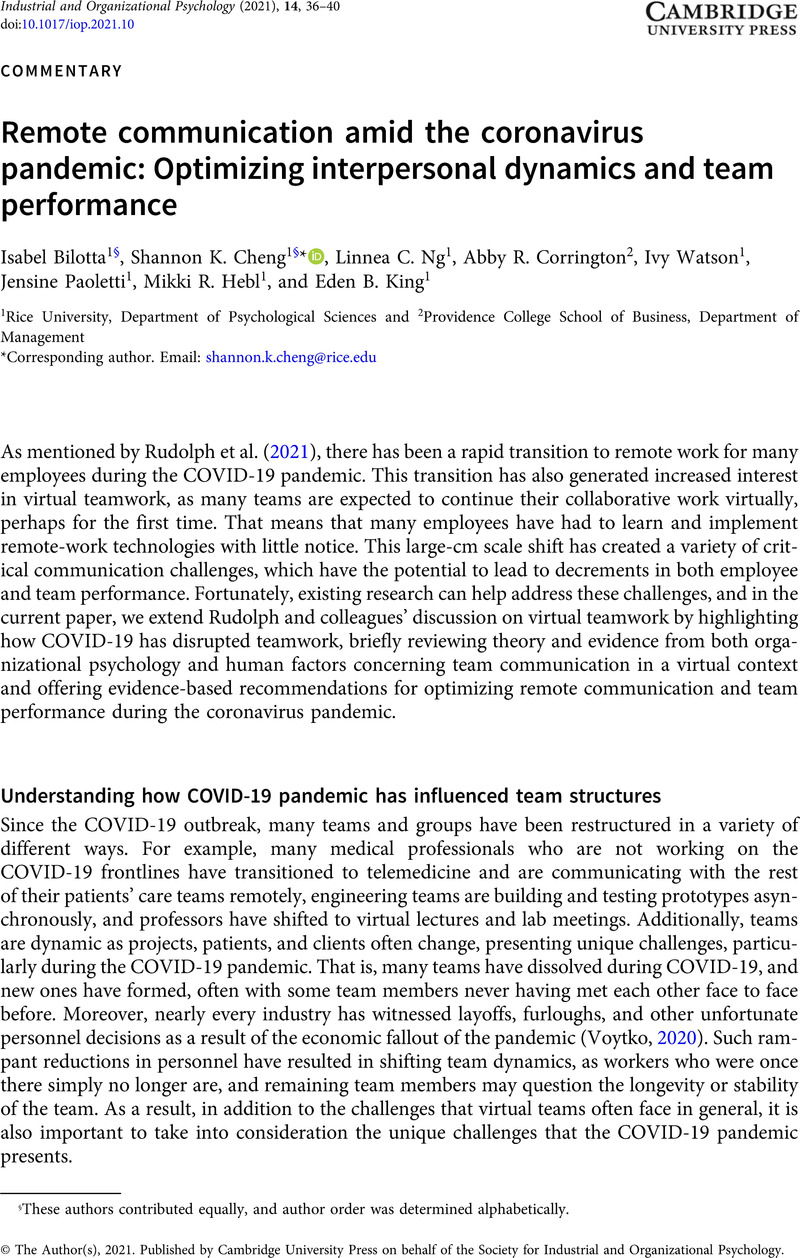Crossref Citations
This article has been cited by the following publications. This list is generated based on data provided by Crossref.
Dragomir, Gabriel-Mugurel
Fărcașiu, Marcela Alina
and
Șimon, Simona
2021.
Students’ Perceptions of Verbal and Non-Verbal Communication Behaviors during and after the COVID-19 Pandemic.
Applied Sciences,
Vol. 11,
Issue. 18,
p.
8282.
Barath, Matus
and
Schmidt, Dusana Alshatti
2022.
Offices after the COVID-19 Pandemic and Changes in Perception of Flexible Office Space.
Sustainability,
Vol. 14,
Issue. 18,
p.
11158.
2022.
Retaining Women in Tech.
Lohaus, Daniela
and
Habermann, Wolfgang
2023.
Digitale Personalauswahl und Eignungsdiagnostik.
p.
227.
Hardin, Andrew
Davison, Robert M.
Schneider, Christoph
Looney, Clayton A.
and
Sarker, Suprateek
2024.
Contextualising collective efficacy in virtual team research: The essential role of collaborative technologies in the virtual team efficacy conceptual framework.
Information Systems Journal,
Vol. 34,
Issue. 2,
p.
469.
Aljabr, Njod
Petrakaki, Dimitra
and
Chamakiotis, Petros
2024.
Unpacking the sociomaterial parameters of connectivity management practices in the Saudi academic context.
Information Technology & People,
Hardin, Andrew
2024.
Information Systems.
Vol. 502,
Issue. ,
p.
135.
Heubeck, Tim
Storz, Anne-Sophie
and
Meckl, Reinhard
2024.
Success factors of global virtual teamwork: A social capital perspective.
Digital Business,
Vol. 4,
Issue. 2,
p.
100081.



